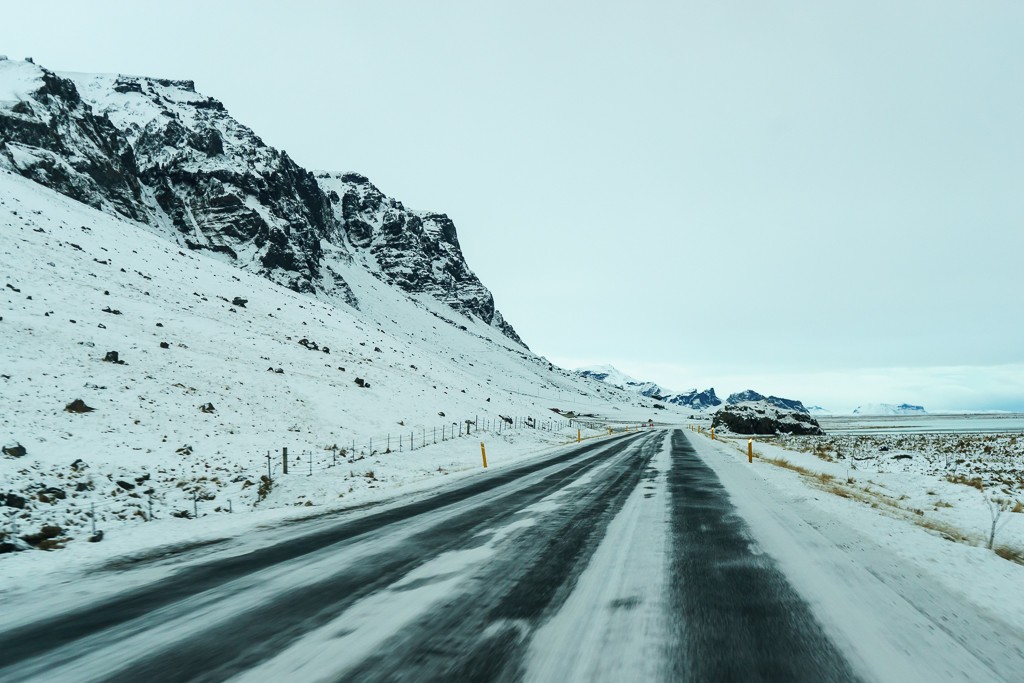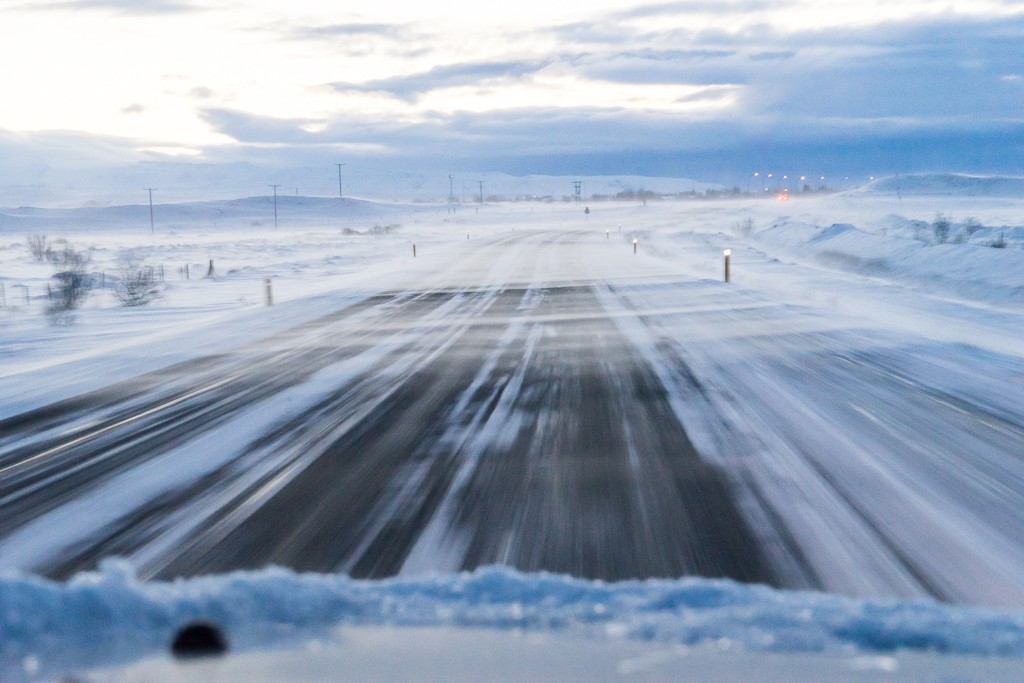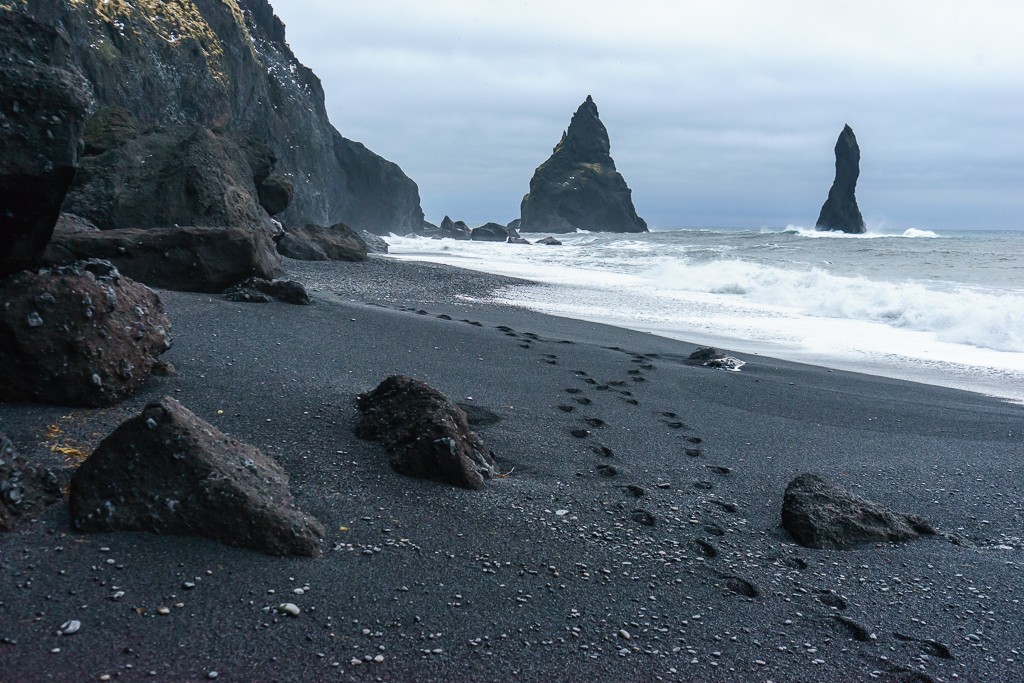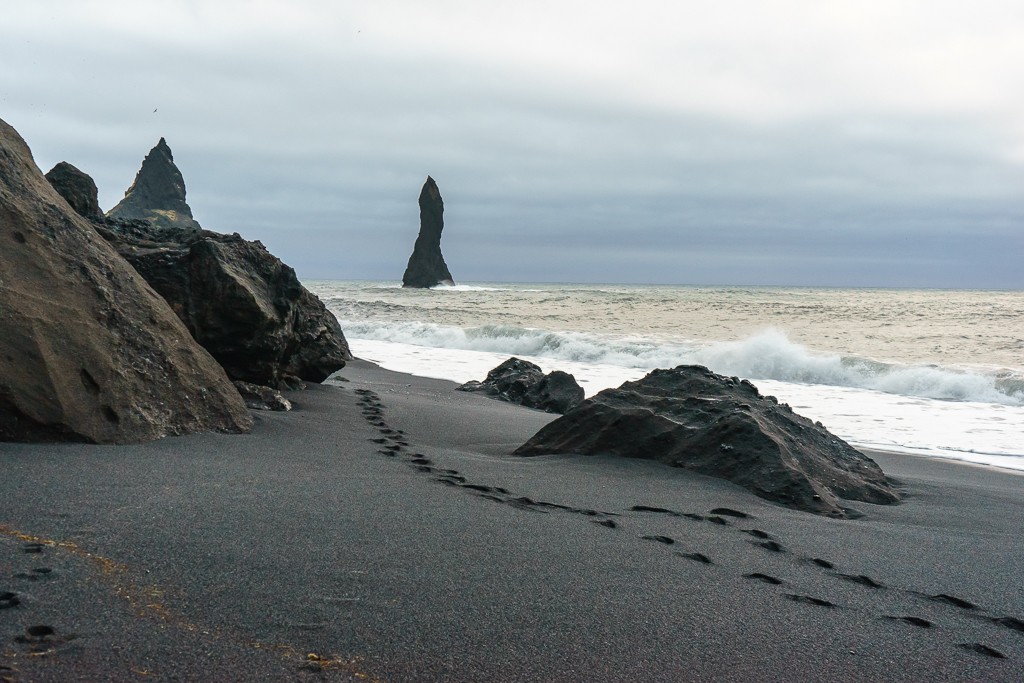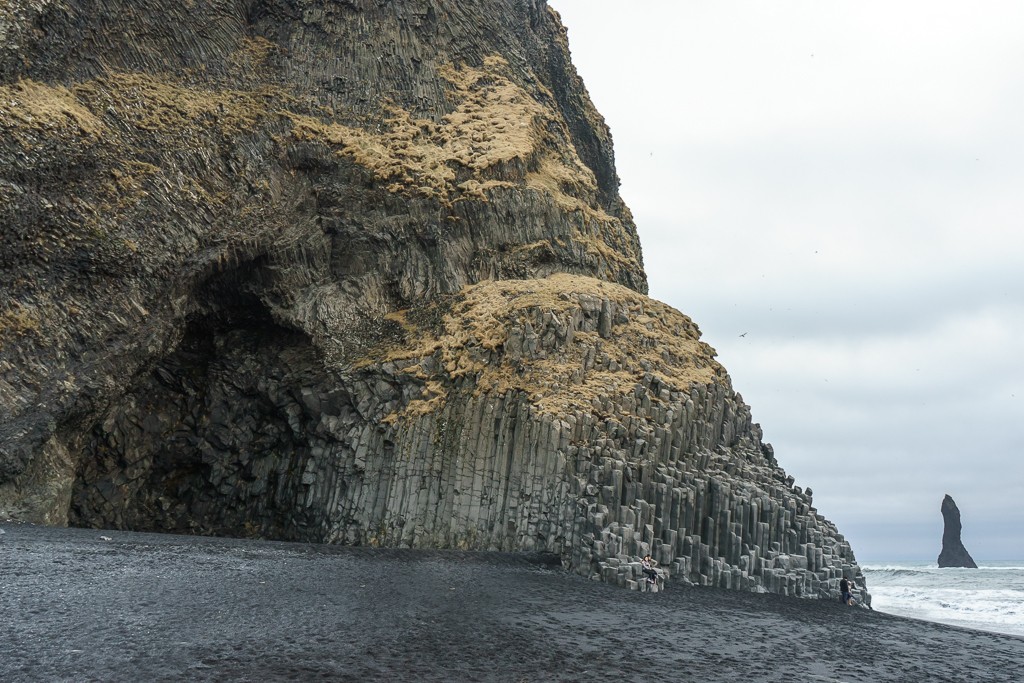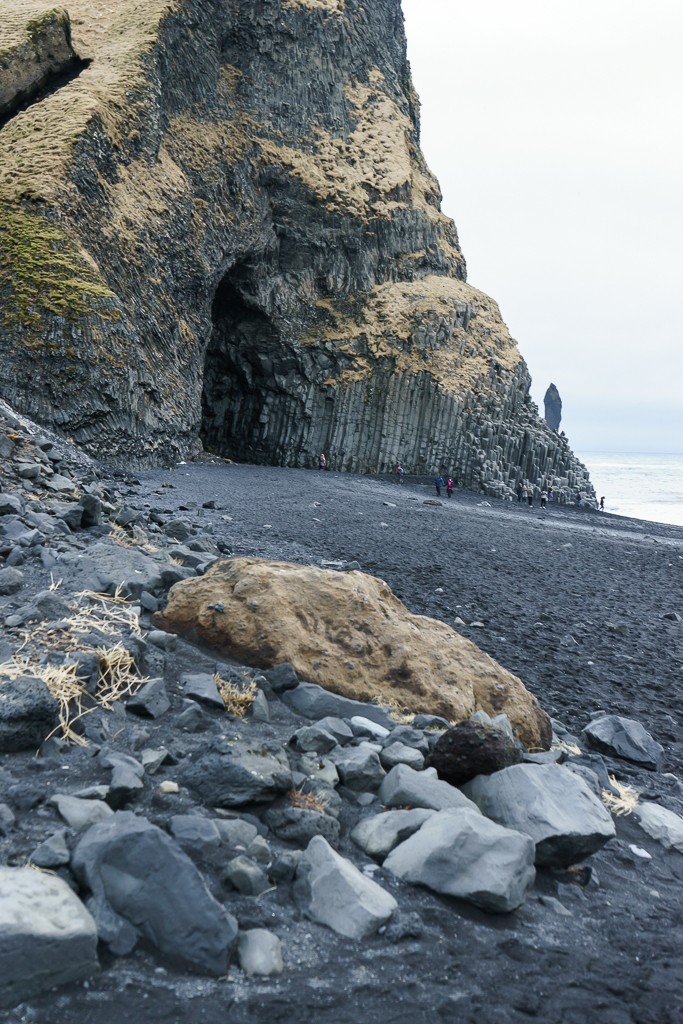I think it’s pretty obvious by now that I have “a thing” for geology and rocks. While researching Iceland many months ago I came across a few photos of an area on the beach that had caves and cliffs made of those awesome looking basalt columns. We HAD to go! The coastline reminds me a bit of Washington and Oregon with the angry ocean, occasional cliff face, and rocks jutting out of the water, however Reynisdrangar takes all of that and kicks it up a notch. The wind was really howling and the North Atlantic isn’t a very friendly place to be most of the time anyway so the seas were huge and the rocks were jagged and fierce. This place is AWESOME!
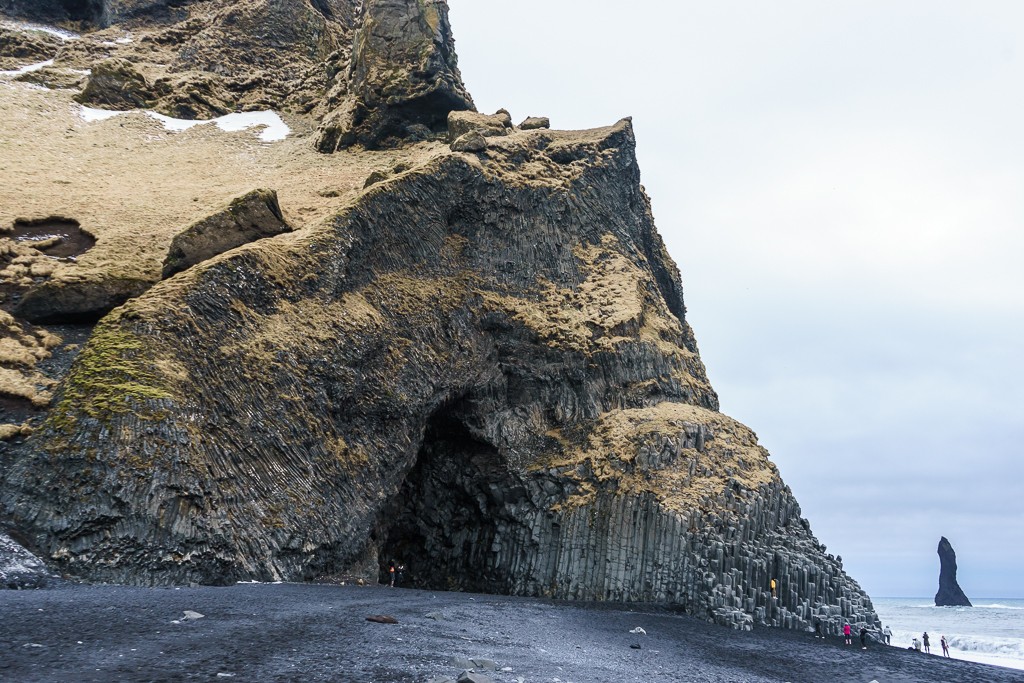


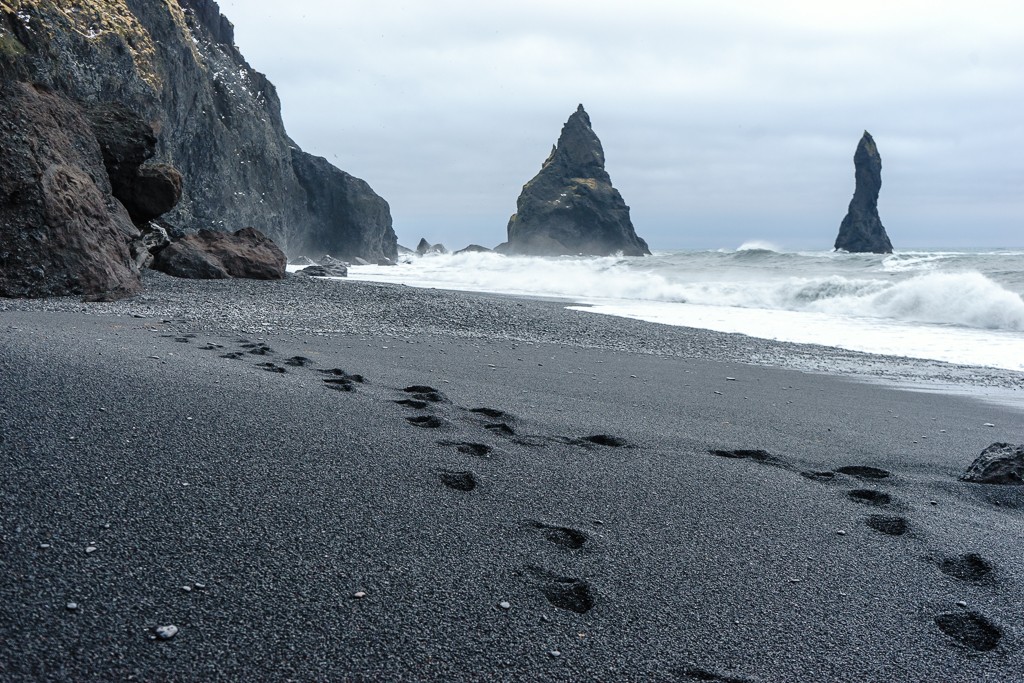
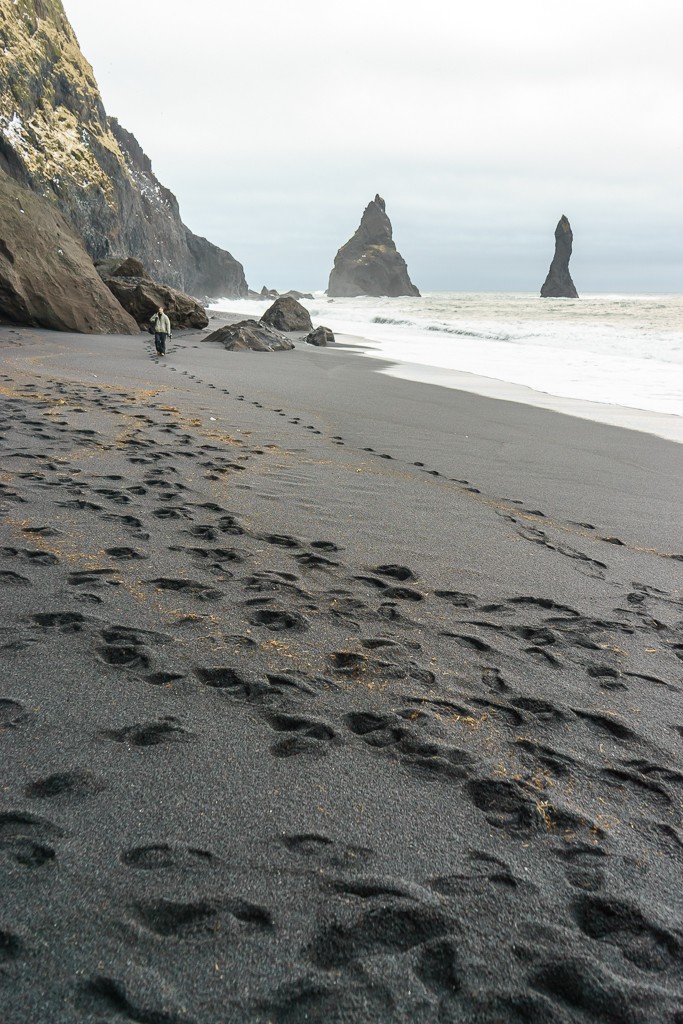
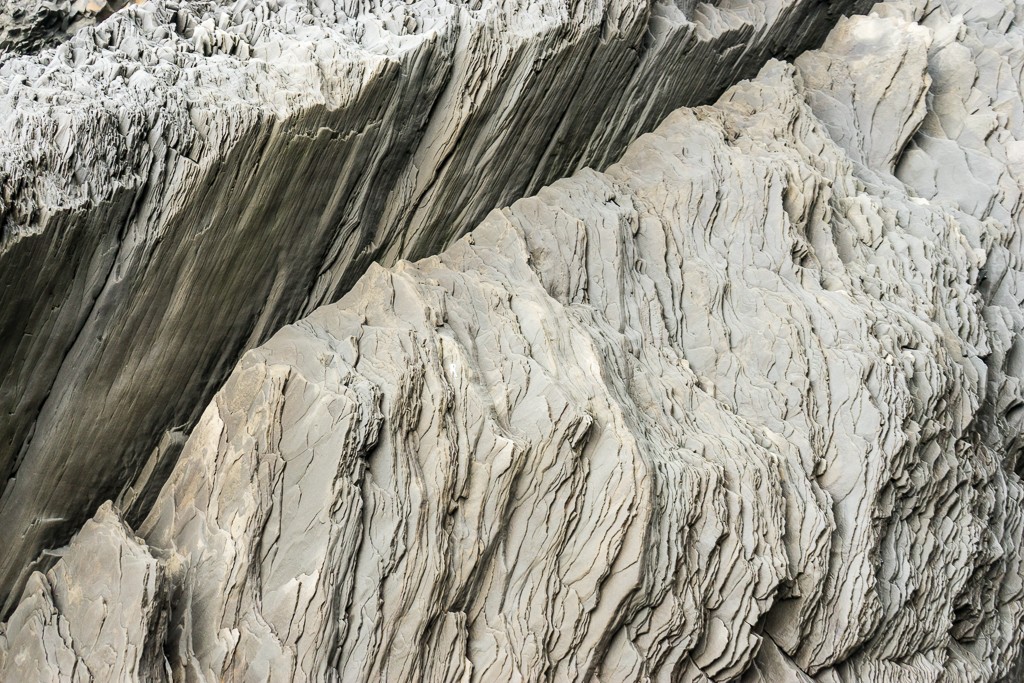
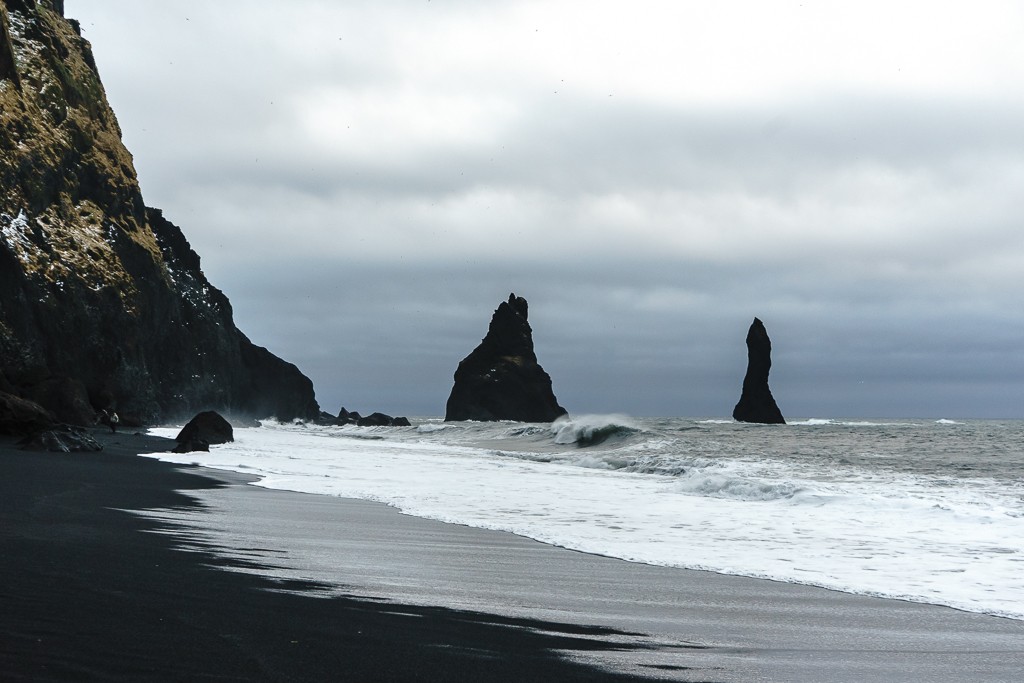
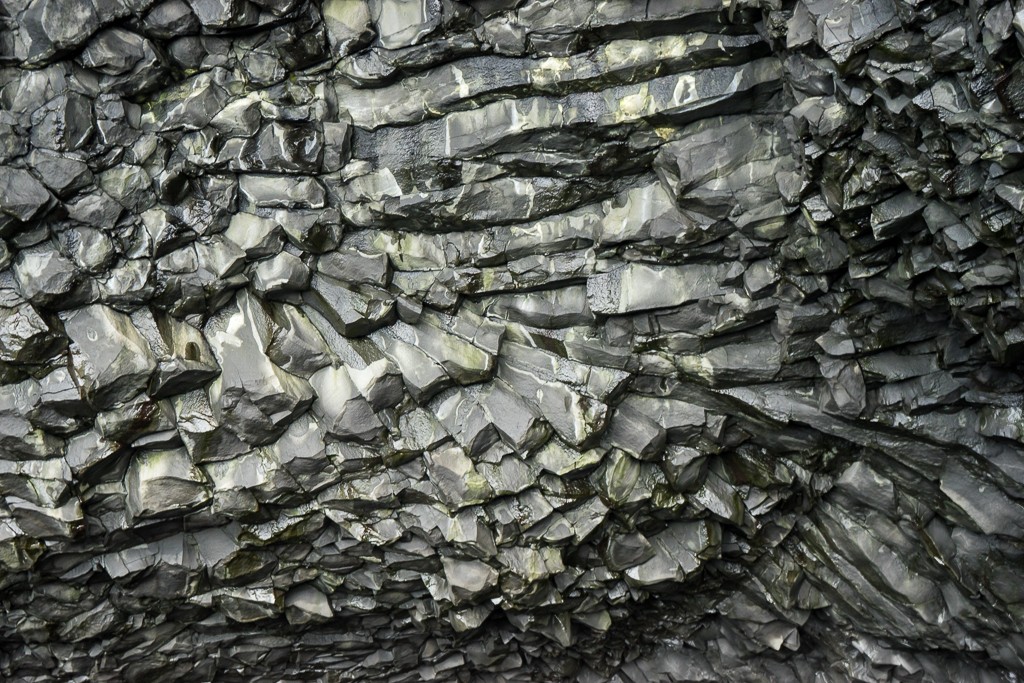
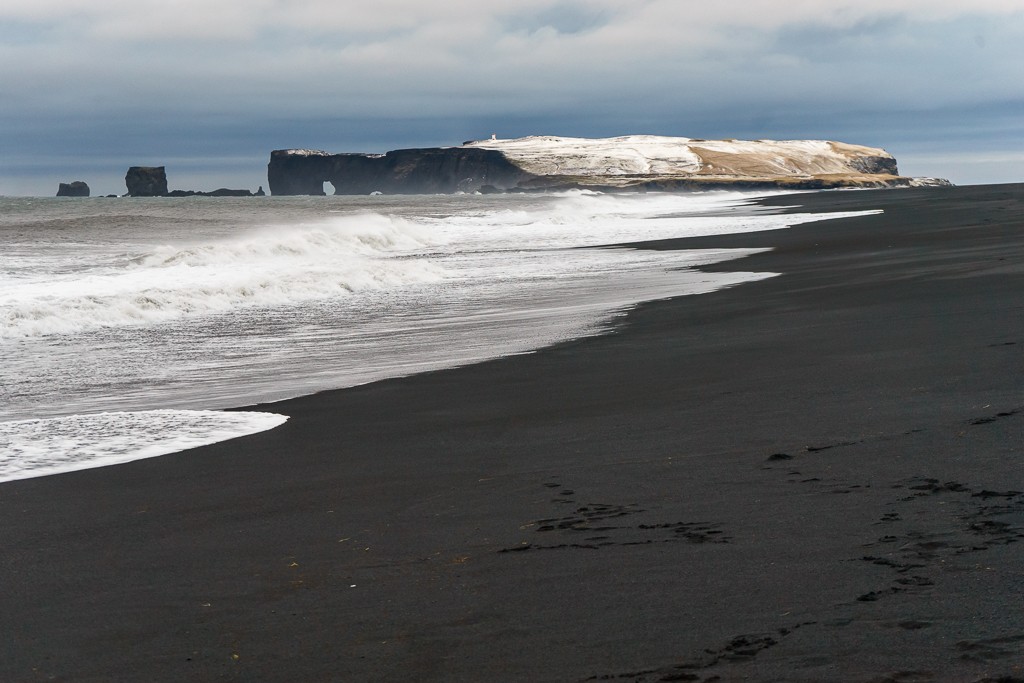
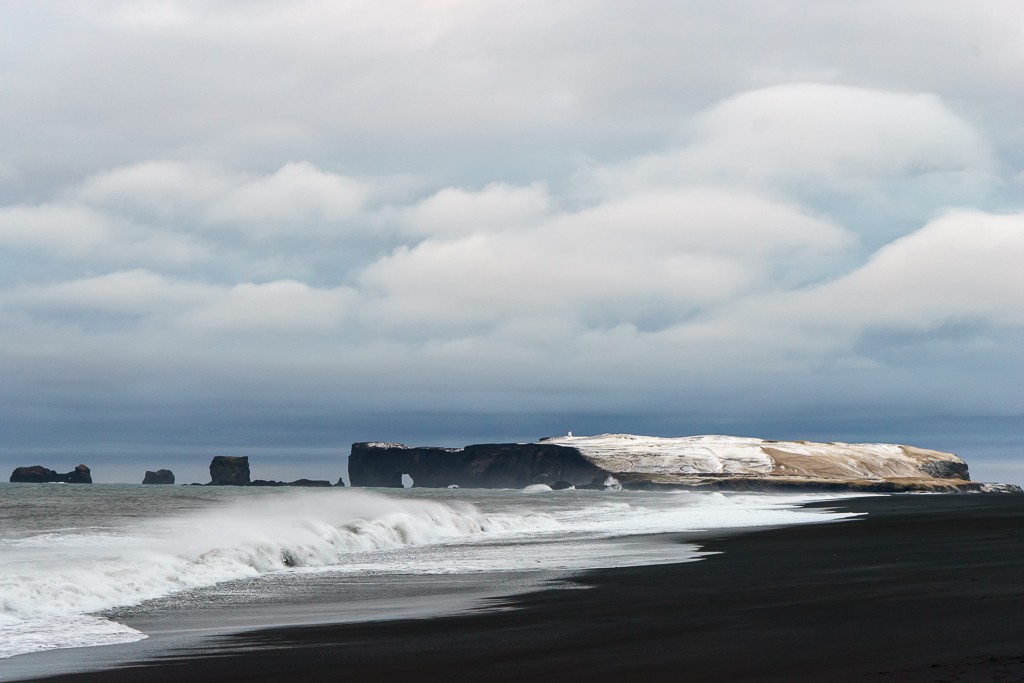

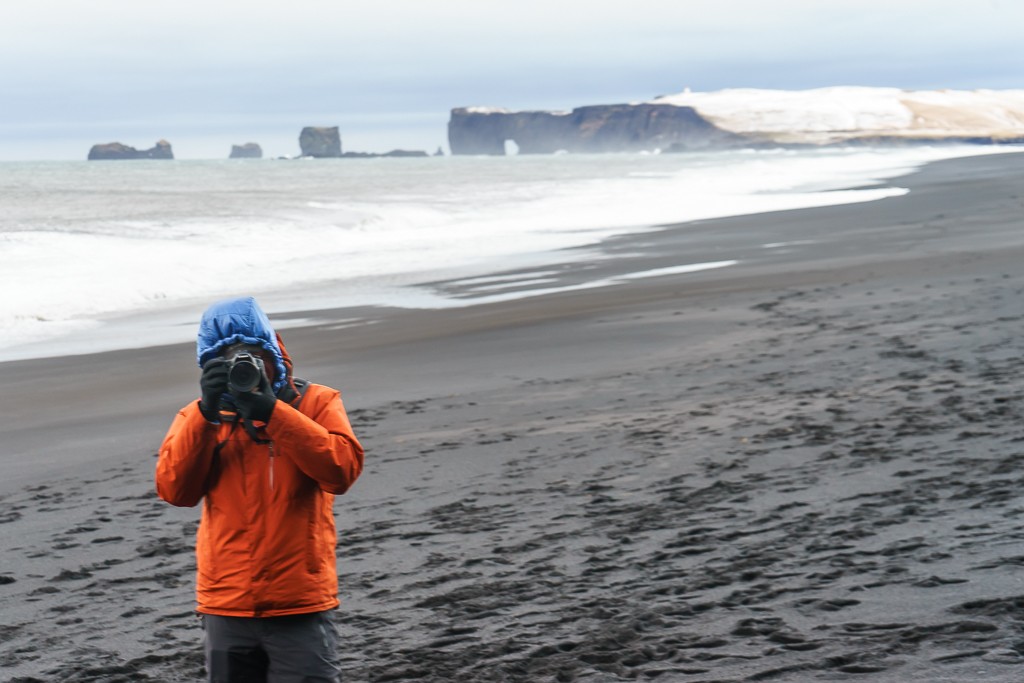
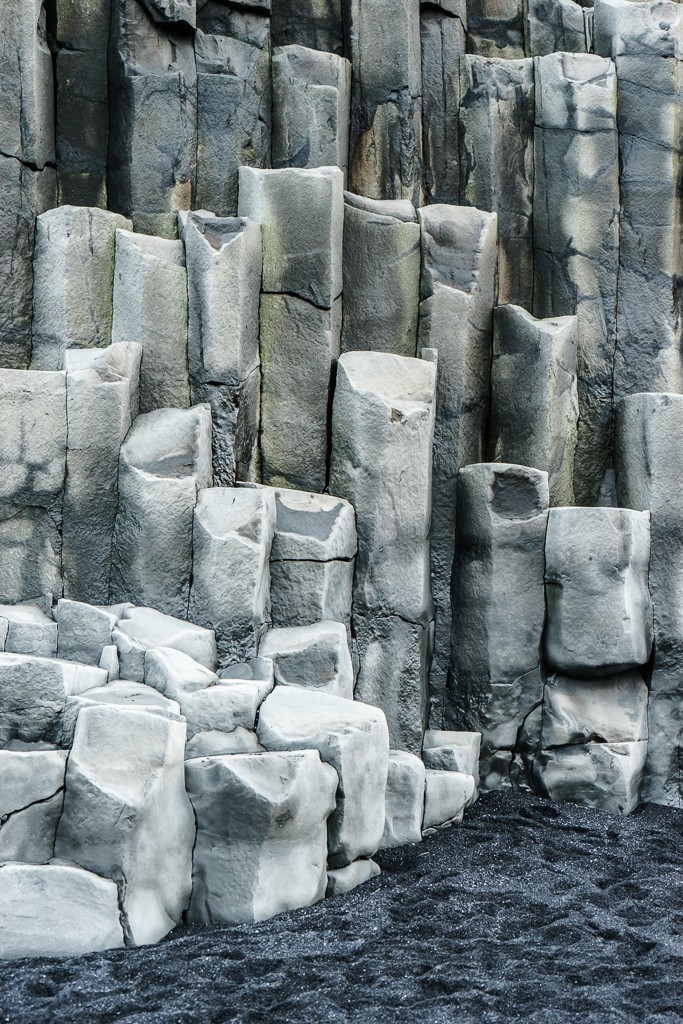
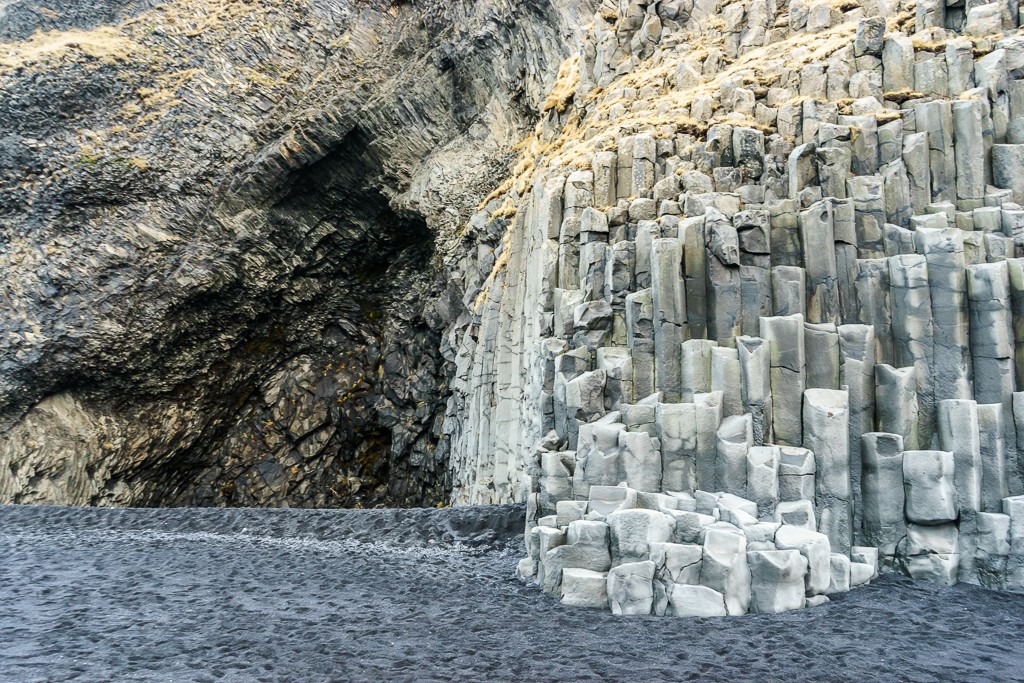
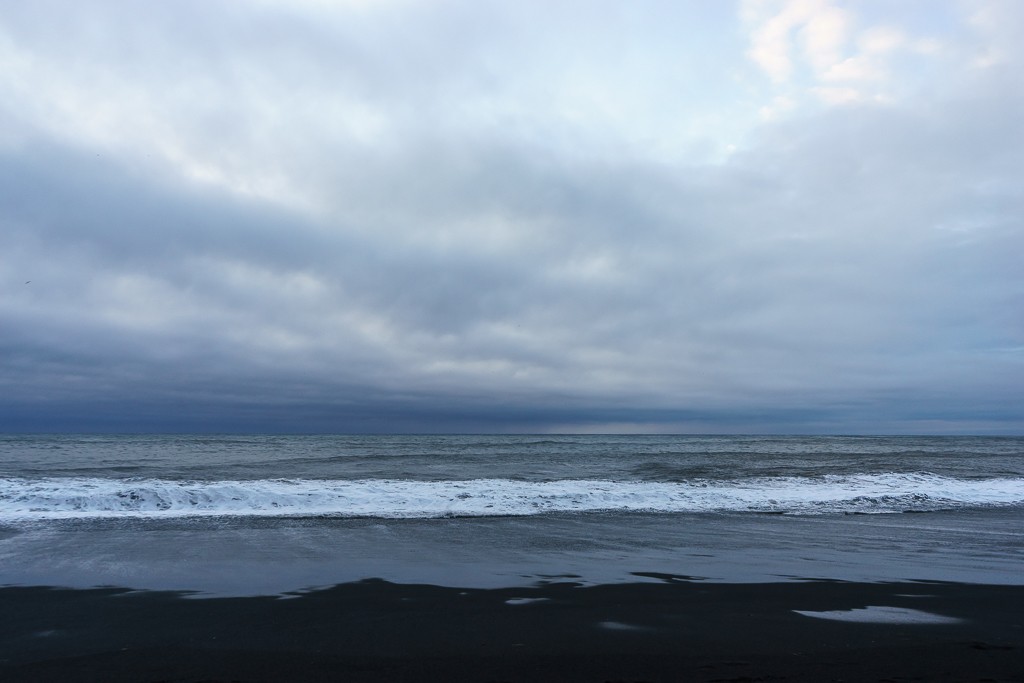
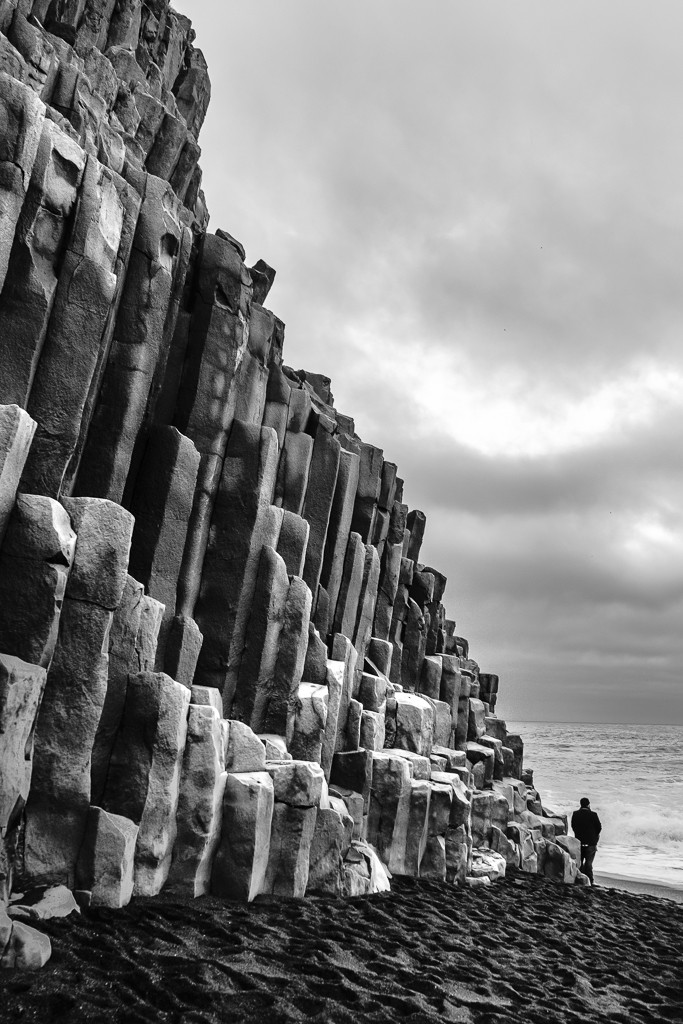
And now here’s Wikipedia to save the day with how columnar basalt forms. (because I obviously wanted to look it up also!)
During the cooling of a thick lava flow, contractional joints or fractures form. If a flow cools relatively rapidly, significant contraction forces build up. While a flow can shrink in the vertical dimension without fracturing, it can’t easily accommodate shrinking in the horizontal direction unless cracks form; the extensive fracture network that develops results in the formation of columns. The topology of the lateral shapes of these columns can broadly be classed as a random cellular network. These structures are predominantly hexagonal in cross-section, but polygons with three to twelve or more sides can be observed. The size of the columns depends loosely on the rate of cooling; very rapid cooling may result in very small (<1 cm diameter) columns, while slow cooling is more likely to produce large columns.
As usual, because lava! 😉 I actually see quite a bit of columnar basalt in Eastern Oregon. I’ve commented before how strangely similar the geology is between Iceland and Oregon. There’s probably a reason I enjoy both places so much!
